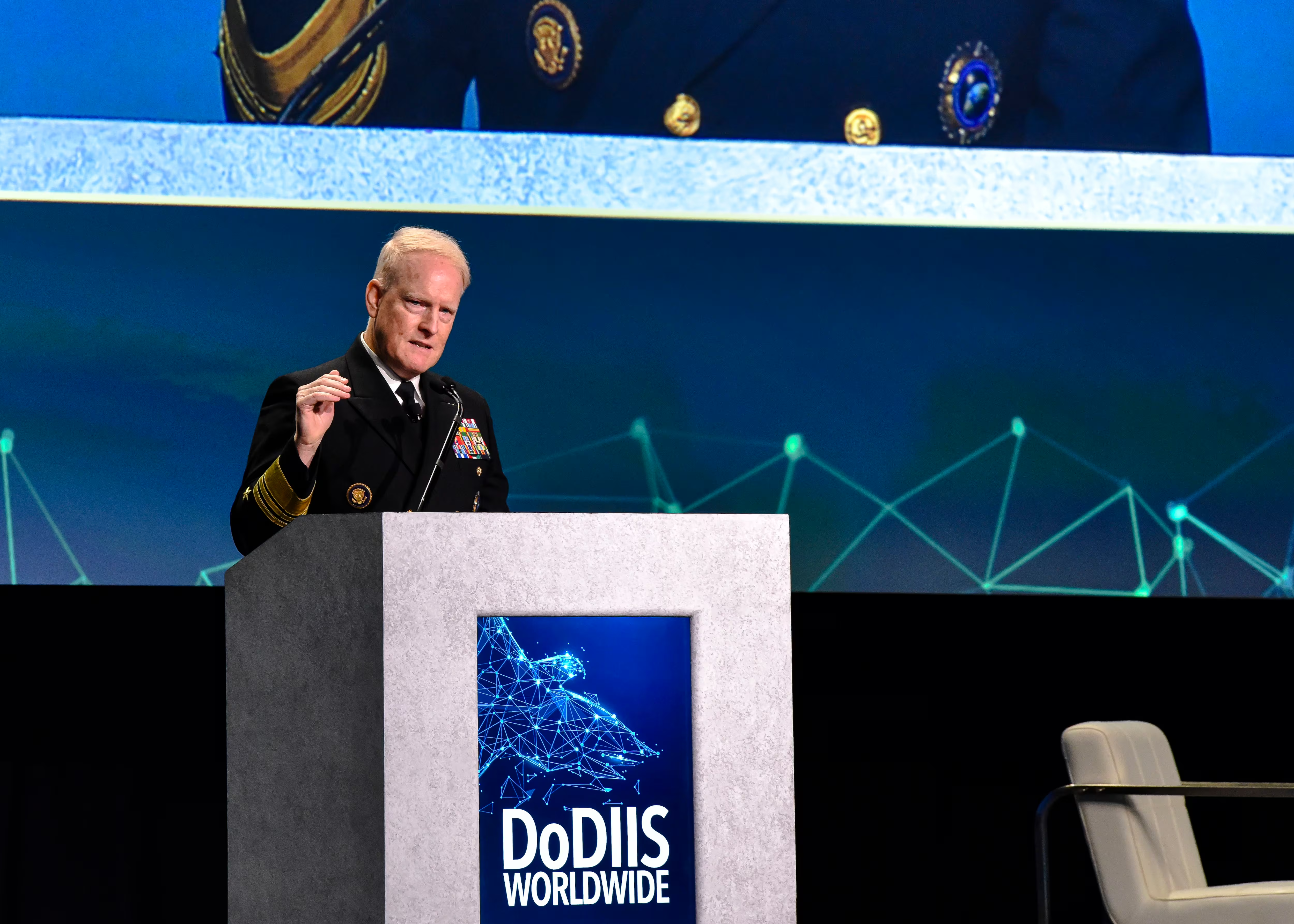Each of the U.S. military services are reorganizing under a banner of information warfare, a subject area that often includes cyber, electronic warfare, signals intelligence and information operations. But, now, the Army’s cyber school is struggling to figure out how — and when — to teach those disciplines.
“The big elephant in the room is how are we going to incorporate information operations as part of the convergence or transformation,” Maj. Chase Hasbrouck, course manager for the Cyber Common Technical Core at the Army cyber school. Hasbrouck spoke to Fifth Domain during a week-long visit and was embedded with students at Fort Gordon earlier this year.
Of course, the Army’s cyber school needs to continue teaching students the appropriate skills set out by U.S. Cyber Command for personnel that will one day feed up to the joint cyber mission force ... but what about the other disciplines? The head of Army Cyber Command, Lt. Gen. Stephen Fogarty, has repeatedly said that by 2028 he’d like the command to transition to an approach more along the lines of Army Information Warfare Operations Command.
In October 2018, the Army transitioned its electronic warfare personnel into the cyber branch, further converging these disciplines.
“Culturally, it’s a challenge integrating electronic warfare because that’s just not something that has been part of what we do and now it is part of what we do. Now [information operations] is going to be another huge step down that road of integration that’s going to be a challenge,” Hasbrouck said. “The plan is to retrofit all of the current curriculum to incorporate EW material into it. Right now, everybody gets the initial cyber training and then additional cyber training you get for the EW role on top of that. It’s not something that everybody gets. That is, again, a decision that is still very much being debated right now.”
The enlisted electronic warfare specialists remain at Fort Sill in Oklahoma while the Army works to get them to Fort Gordon. Maj. Gen. Neil Hersey, then the commandant for the Army Cyber School, told Fifth Domain that Army leaders are sending mobile training teams to staff not yet at Fort Gordon to get them better acquainted with cyberspace operations. Hersey is now commander of Fort Gordon and the Cyber Center of Excellence.
While the overall information warfare aspect is still unclear from the schoolhouse perspective, the Army has essentially a two-track plan for its cyber/electronic warfare force.
“Think of it as akin to [how] we have our traditional [special operations forces] … and then you have your very, very high-end SOF in [Joint Special Operations Command] — that is sort of the model we’re putting in place,” Maj. Gen. John Morrison, formerly the commander of the Cyber Center of Excellence, said last year. Morrison is now chief of staff at Cyber Command. JSOC refers to the elite special operations units such as Naval Special Warfare Development Group — often known as SEAL Team 6 — and Delta Force.
“We’ll have tactical cyber operators … then the very, very, very best will move into the cyber mission force,” Morrison said, referring to the cyberwarrior cadre that serves U.S. Cyber Command and conduct strategic-level cyber operations.
The Army is working on standing up a tactical cyber/electronic warfare battalion — the 915th Cyber Warfare Support Battalion — that will work alongside units on the ground.
Additionally, the Army wants to place cyber and electromagnetic activities (CEMA) planners on the staffs of all echelons. These planners will be able to inform commanders what non-kinetic options might be available to achieve mission objectives and be able to work with the appropriate organizations to execute them.
For the electronic warfare personnel who will receive additional training on top of the cyber baseline, they could become either CEMA planners or part of a new electronic warfare unit on the ground, Hersey said.
Mark Pomerleau is a reporter for C4ISRNET, covering information warfare and cyberspace.








